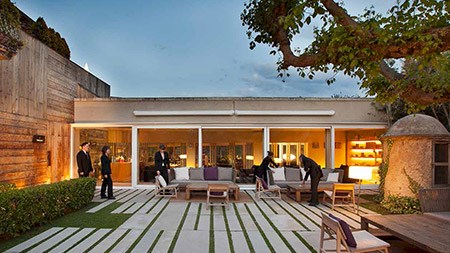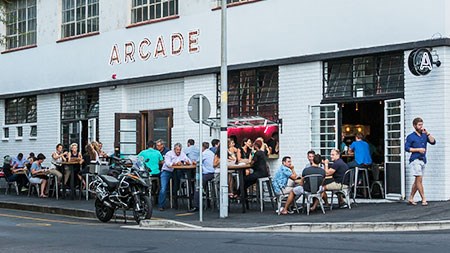The recession seems to have wafted away in a haze of kimchi-scented, sustainably caught seafood, and the world’s finest eateries are busier than ever before.
The grumpy maître d’, deliberating whether to let you into ‘his’ restaurant? The snobby waiter with napkin over one arm, brushing crumbs off the starched white tablecloths? The sommelier with an endless wine list and condescending tone? Forget the clichés… when it comes to fine dining it’s a brave new world of story-telling chefs and ingredients with a family tree. With the recent announcement of the 50 best restaurants on the planet, here’s a whip around global kitchens to uncover 2014’s new top fine- dining trends.
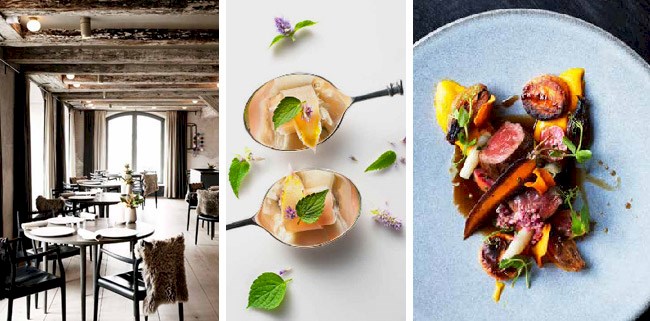
No jacket required
Memorable? Yes. Stuffy? No. The world’s top restaurants are increasingly leaving their haughty European roots behind and embracing a more relaxed New World approach. “Fine dining is being redefined,” says Tamsin Snyman, culinary consultant and Academy Chair for Africa & Indian Ocean Islands for The World’s 50 Best Restaurant awards. “Diners are no longer looking for silver service, cut-glass and white-gloved pompous waiters… they are finding the same satisfaction in low-key, less-fussy establishments.”
Heritage is hot
From Copenhagen’s Noma (noma.dk) to DOM (domrestaurante.com.br) in São Paulo, local culinary traditions are being identified as cuisines in their own right, reviving time-honoured methods – smoking, pickling and, increasingly, fermentation – and exploring long-forgotten ingredients. Although never afraid to co-opt global influences, the world’s top chefs are “cooking more true to their roots and their geographic location,” says Snyman.
In the Cape Winelands, chef Chris Erasmus at Pierneef à La Motte (la-motte.com) has been a leader in reviving and modernising old Cape cookery, while in Spain the acclaimed El Celler de Can Roca (www.cellercanroca.com) offers avant-garde dishes that remain faithful to the Roca brothers lineage of cooks.
Eater-tainment
Open kitchens are becoming commonplace as restaurants shift to providing more than just a meal: diners are demanding a multifaceted experience, a sensory journey. “You’re not paying R1 000 for just a meal; you’re paying for enjoyment, and at the end of the evening you want to feel that you’ve experienced something special,” says award-winning chef Luke Dale- Roberts from The Test Kitchen (thetestkitchen. co.za) in Cape Town. “A lot of the food on our Gourmand menu involves interaction. I want guests to be involved in the process.” That could be a close-up view of the pig or sheep’s head that’s been cooked sous vide then grilled, or a ‘palate cleanser’ of green grass to be rubbed between your hands before the next course. Engaging all the senses is key.
Let the chef decide
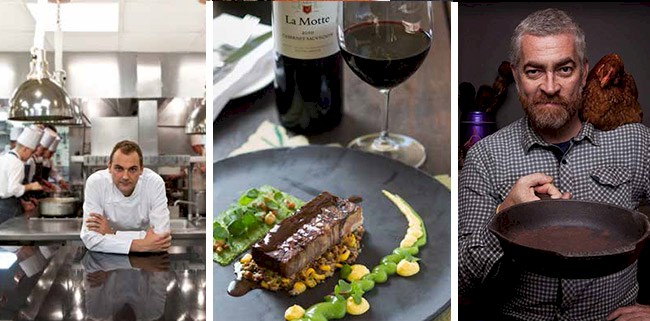
Forget about asking for à la carte: at many top eateries your only choice is a set tasting menu. “There will always be a handful of restaurants that will offer tasting-only menus,” says Snyman. “These restaurants are usually quite small and exclusive, with a hot-shot chef that has the credibility to dictate and still have a faithful following.”
A perfect example is New York’s acclaimed Eleven Madison Park (elevenmadisonpark.com), where Swiss chef Daniel Humm has earned three Michelin stars for his only offering: a multicourse tasting menu (US$225 per person) that “focuses on the extraordinary agricultural bounty of New York and on the centuries-old culinary traditions that have taken root here”.
Similarly, Dale-Roberts limits dinner service at The Test Kitchen to a choice of two set menus, Discovery or Gourmand, with good reason, he says: ‘The narrower you make your offering and the less choice you provide, the more you’re able to build a balanced dining experience.”
The beautiful South (America)
While Asian flavours are still running riot across the globe, South America and its Nuevo Latino cuisine is the one to watch. “We’ll see a lot of South American influences spreading globally,” predicts Abigail Donnelly, editor of Eat Out and a local Academy member for The World’s
50 Best Restaurants awards, who adds that “it’s also about finding different pockets within a region: in South America, it’s Peru and Brazil; in Asia, it’s Korea and Vietnam.” Need further proof? The 50 Best awards have splintered a regional offering for Latin America. Alex Atala from São Paulo’s DOM currently holds top spot for championing traditional Brazilian ingredients and dishes. The Amazon rainforest is his greengrocer.
Sustainable still counts
Local, ethical and sustainable remain important buzz words in top kitchens.
Sustainability is not a trend, it’s a necessity
says Donnelly. “But sustainability is also a form of storytelling; chefs know the story of the ingredients in their kitchen.” Christiaan Campbell at Delaire Graff (delaire. co.za) outside Stellenbosch is a leading light on this front with his admirable focus on sustainable seafood, ethically raised meat and support for local farmers. ‘Nose-to-tail’ and ‘root-to-tip’ cooking (the use of every part of the animal or vegetable) is also becoming more widespread. This year Fergus Henderson – the London chef acknowledged as the godfather of ‘nose-to-tail’ – received a Lifetime Achievement award for his contribution to British gastronomy. Tied to this theme is the continued appreciation of foraging, made famous, of course, by Noma’s René Redzepi. Happily, it’s one element where local chefs are ahead of the curve, says Snyman: “I think we do this more naturally than the rest of the world. We haven’t adopted this from global trends.”
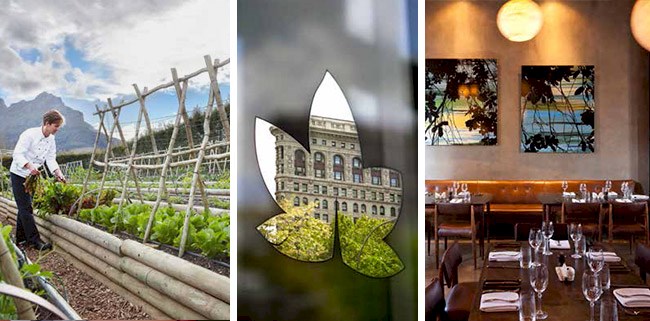
Sommeliers in the mainstream
Globally, the role of sommeliers is changing, says Neil Grant, owner of Cape Town restaurant Burrata (burrata.co.za) and chairman of the South African Sommeliers’ Association: “We have this mentality that a sommelier is a role for a fine-dining restaurant. If you go to the Europe or USA – and we usually lag behind those countries – you can go to some amazing mid-level restaurants that have fantastic wine-service programmes.” Expect the same to trickle down to local restaurants soon.
Show me the butter!
Along with artisan breads, a simple serving of butter is increasingly becoming a point of difference for fine-dining establishments. From wine-infused butters to smoked eggplant dips, salted home-churned butters to spreads infused with roasted garlic, the world is the chef’s buttery oyster.
World's 50 best restaurants awards 2014
Sustainability is not a trend, it’s a necessity. It is also a form of storytelling; chefs know the story of the ingredients in their kitchen.
– Abigail Donnelly, editor of Eat Out and a local Academy member for The World’s 50 Best Restaurants awards
Copenhagen’s Noma restaurant scooped top honours in this year’s prestigious World’s 50 Best Restaurant awards. A phenomenal fourth win for chef-owner René Redzepi, the minimalist Danish pioneer of foraged menus, the list – which is based on a poll of over 800 international chefs, restaurateurs, gourmands and food critics – recognises a renaissance for Noma after what Redzepi called a ‘restaurant mid-life crisis’. In the past year, the 45-seater restaurant located in a dockside warehouse has been transformed with a renewed confidence thanks to more considered experimentation.
As always, European venues dominated the list, which is now in its 12th year: last year’s winner, Spain’s El Celler de Can Roca (cellercanroca.com), was bumped to second place, with Italy’s Osteria Francescana (osteriafrancescana.it) holding steady at number three. But South Africa’s The Test Kitchen (thetestkitchen.co.za) placed at 48th and also took the Best in Africa award. The move from 61st place last year to 48th is a remarkable achievement, which chef-owner Luke Dale-Roberts ascribes to the fact that the central purpose of the restaurant is to “explore every facet of an ingredient, a philosophy that remains central to the decisions we make in all areas of the restaurant”.
theworlds50best.com
